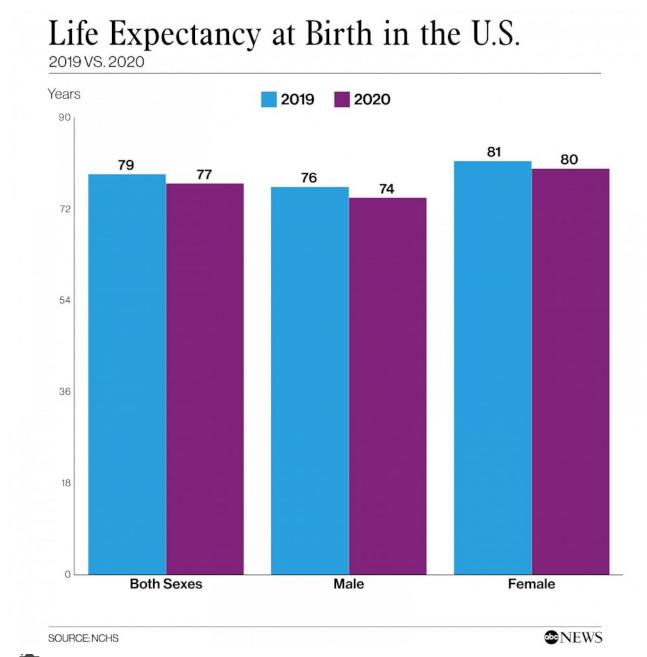Life expectancy and population growth in the United States have both hit record lows, and labor market development may be further constrained.
On December 22, the U.S. Centers for Disease Control and Prevention (CDC) finally reported that U.S. life expectancy fell by 1.87 to 77 years in 2020, a decline of 0.3 years above the initial value published in mid-year and the largest decline since World War II.
Report data shows that the average life expectancy in the United States in 2020 is 77 years, down 1.8 years from 2019. Among them, male life expectancy was 74.2 years, down 2.1 years from 2019; female life expectancy was 79.9 years, down 1.5 years from 2019.

The data also show that mortality rates are rising in every age group except children aged 1 to 4 years, with COVID-19 being the third leading cause of death, after heart disease and cancer, causing about 351,000 deaths. That means 85 out of every 100,000 people die because of COVID-19.
Life expectancy in the United States has been declining in recent years, as has increased mortality from accidental injuries, including drug overdose, heart disease, homicide, and diabetes.
Data released last month by the Centers for Disease Control and Prevention showed that the U.S. recorded the highest number of drug overdose deaths in the 12 months to April. Among them, the number of deaths from diabetes exceeded 100,000 for the first time, and the number of deaths from accidental or unintentional injuries, including drug overdose, exceeded 200,000.
Elizabeth Arias, a demographer at cdc's National Center for Health Statistics and author of the report, said the final data showed a greater drop in life expectancy because it incorporated Medicare data that more accurately reflected mortality among older Americans.
Arias noted that when she first began calculating interim estimates in July, life expectancy fell so much that she had to re-examine her calculations several times, with life expectancy falling by three years or more in some groups.
Not only did life expectancy decrease, but the population growth rate in the United States was only 0.1%, a record low, and in this year, the U.S. population increased by only 393,000 people, of which the number of births was 148,000 more than the number of deaths, which was the first time since 1937 that the population of the United States increased by less than 1 million.
The decline in life expectancy and population growth in the United States undoubtedly casts a shadow on the recovering US labor market, and the low population growth rate means that the supply of new labor is insufficient, restricting the development of the labor market, and the shortening of life expectancy may also lead to a decrease in labor supply.